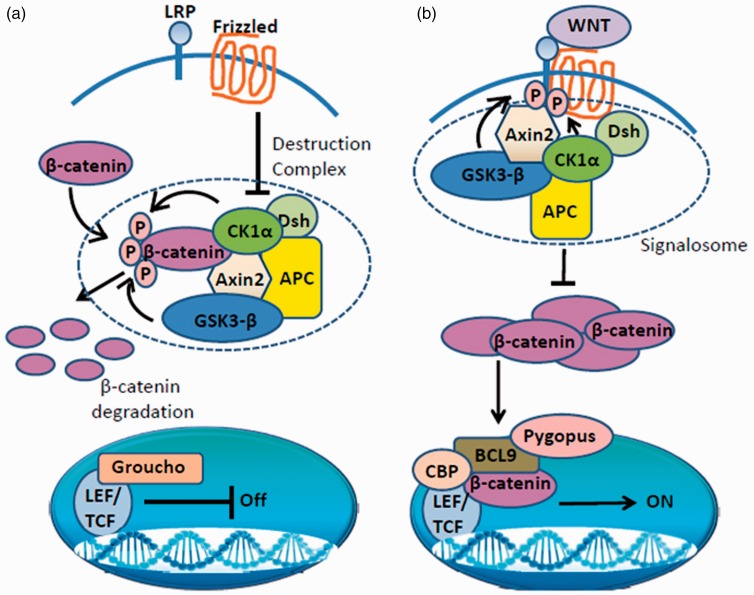Figure 1.
Classical scheme of canonical Wnt signaling. (a) When Wnt ligands are absent, β-catenin in the cytoplasm is constantly targeted for proteasome-mediated degradation by a multiprotein destruction complex. The nuclear transcription factor lymphoid enhancer-binding factor/T cell-specific factor (LEF/TCF) associates with Groucho and represses target gene expression. (b) Upon binding of a Wnt ligand to its receptor, the Wnt-associated Frizzled binds aco-receptor which together form a large multiprotein complex or signalosome. This complex initiates a cascade of phosphorylation events which prevents the degradation of β-catenin. As a result, β-catenin accumulates in the cytoplasm and is translocated into the nucleus, where it displaces Groucho and forms a complex with BCL9, Pygopus, histone modifier CBP and converts LEF/TCF from a transcriptional repressor to an activator which activates the expression downstream target genes. These include CK1a—case in kinase 1α; Dsh—dishevelled; Axin2—scaffold protein; APC—adenomatous polyposis coli; GSK3-β—glycogen synthase kinase 3β; LRP—lipoprotein receptor-related protein 5/6; BCL9—B-cell lymphoma 9 protein; histone modifier CBP— cAMP response element-binding (CREB) protein. (A color version of this figure is available in the online journal.)

